In our latest A to Z series, we are exploring the towns and villages in Emilia Romagna. The region stretches from the Apennines to the fertile Po valley and is famous even amongst Italians for its rich food heritage. It’s also home to some of Italy’s most exclusive brands, among them Ferrari, Maserati and Lamborghini. But how much do you know about its many towns and villages? Thirteen have made it on to the list of borghi piu belli d’Italia. Check out our A to Z guide to Emilia Romagna to discover more.
Argenta
Unfortunately, a lot of Argenta’s historic past was destroyed during WWII and so much of the town is more modern than most of the towns and villages we are focusing on here. However, it is worthy of a mention, not least because, sitting just outside the town centre is the Romanesque Pieve di San Giorgio, which has earned the title of being the oldest church in the Ferrara region dating back to the 6th century.
Bobbio
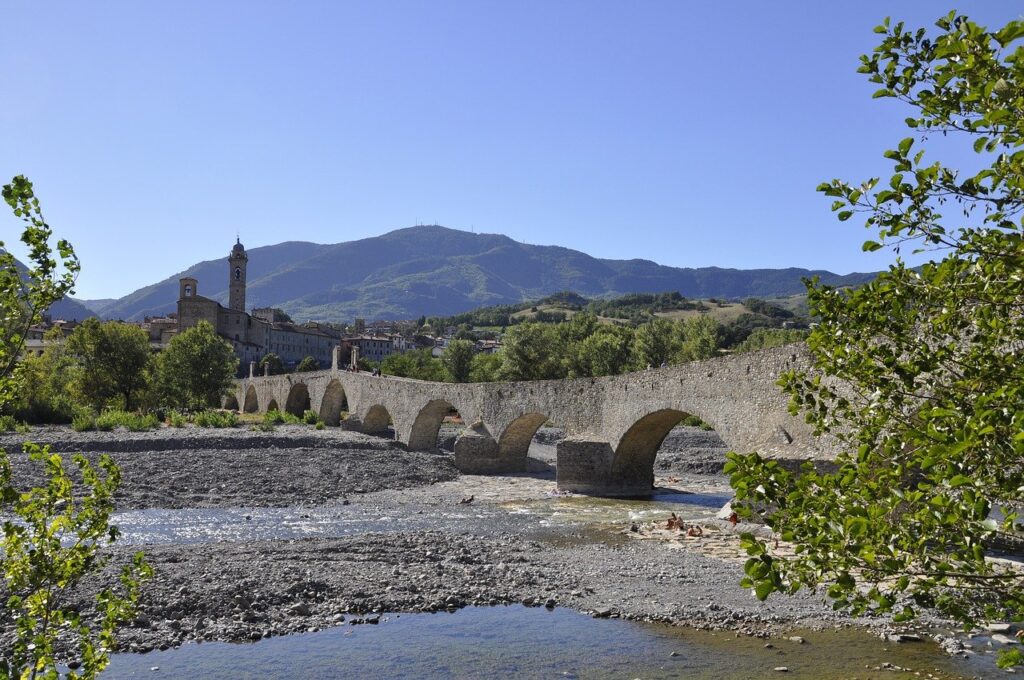
Included in the list of ‘borghi piu belli d’Italia‘, Bobbio is a charming Medieval village centred around its monastery set up by Benedictine monk St Columban. It is set in the heart of the Trebbia Valley, which was described by Ernest Hemingway as ‘the most beautiful valley in the world.’ It’s also home to the striking Ponte Gobbo (Devils bridge), with its 11 arches. Legend has it that Satan built the bridge in a night, supporting it on the backs of his imps. Also worth a visit in the town is the abbey where you can visit St Columban’s tomb and admire the beautiful mosaic floor, the central Piazza Duomo home to the Santa Maria Assunta cathedral, the 14th century Malaspina-Dal Verme castle and Bishop’s tower.
Try and time your visit to coincide with the annual Bobbio Film Festival. Or, visit in the Summer months and join the locals sunbathing on the river banks and cooling off in the rivers waters.
Bologna

Bologna is the capital of Emilia-Romagna. Its history stretches back centuries but these days, it’s one of Italy’s most wealthy cities and an important agricultural, financial, industrial and transport hub. Many large Italian companies have chosen it as a base for their headquarters. It’s also home to the oldest university in the world, home to not one but two leaning towers (one of which is the tallest Medieval tower in the world) and has a charming, well-preserved historic centre that revolves around the central Piazza Maggiore. It is characterised by over 40 km of covered porticoes, 666 arches of which lead to the famous San Luca monastery that lies 4 km from the heart of the city.
Find out more about what to see and do in Bologna in our Bologna travel guide.
Brisighella
Another of Italy’s ‘borghi piu belli‘, Brisighella is a delightfully charming village surrounded by vineyards. Despite its beauty and picturesque multi-coloured buildings, it has somehow escaped the hoards of tourists. You’ll love just wandering around its quiet streets but also worth visiting is its 14th century castle, and marvel at the views of Brisighella from its turrets. The second structure you can’t miss during your visit is the 19th century clock tower and the third is Il Monticino, an 18th century religious sanctuary home to ornate 19th century frescos.
Castell’Arquato
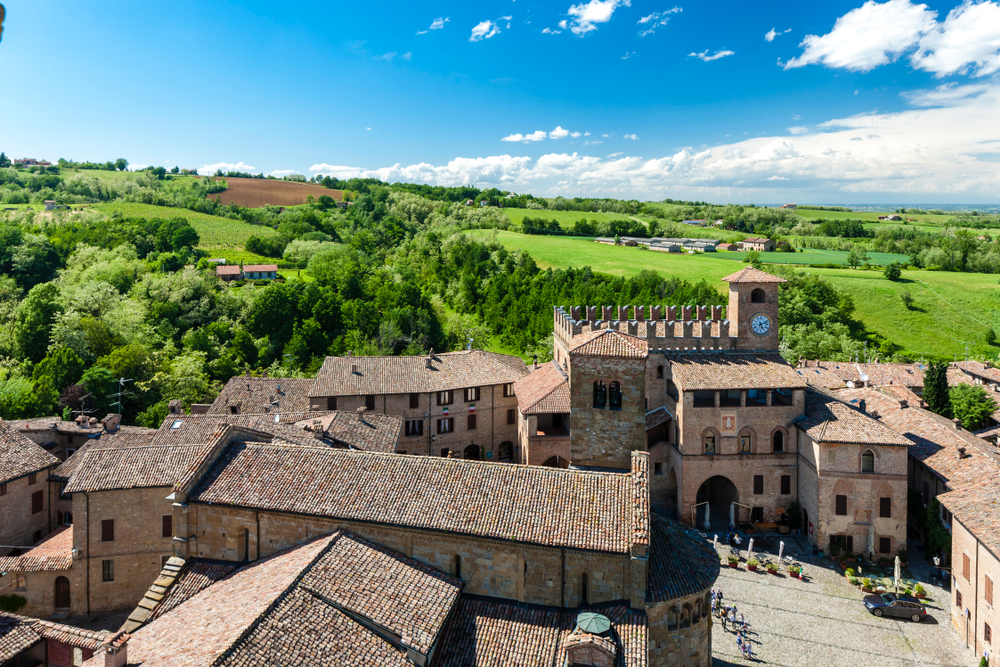
Originally a Roman military settlement, Castell’Arquato is extremely picturesque. At the top of the hill sits a church and castle with the village nestled below this. The main draw for holidaymakers is certainly the opportunity to view the castle – Rocca Viscontea di Castell’Arquato – where you can explore the castle, its courtyard, fortress museum and climb the tower to enjoy some fantastic views. Once you have visited, take a walk in the nearby park to enjoy some more amazing views over the surrounding countryside.
Walk down the hill from the castle to explore the heart of the Medieval village where you will find, amongst other things, the 13th century Palazzo del Duca and adjacent fountain along with a 16th century tower and 12th century Romanesque Church of Santa Maria Assunta, home to some beautiful frescoes. The church also has its own museum whilst other museums in the village include the G. Cortesi Geological Museum and the Luigi Illica Museum. For music lovers, the latter has a number of opera related artefacts including scores, costumes and manuscripts.
Cattolica
Cattolica has had a long and rich history. Occupied as far back as Roman times, in more recent periods it was a stopping point for pilgrims on their way to Loreto or St Peters in Rome and later still, became an important fishing port and, from the 1950s onwards, a tourist destination. To learn more about the history of Cattolica, head to the Museo della Regina (Queen’s Museum).
These days, Cattolica is an elegant seaside resort whose super-clean beaches are awarded the coveted Blue Flag award year after year and which appeals to both young and old alike. As well as spending hours on the beach if visiting in the Summer months, it’s worth exploring Cattolica’s streets. The Viale Bovio is the main road through the town and will lead you to a pedestrianised area lined with shops. However, a great starting point to a visit is the Piazza del Mercato in the heart of the town, which is home to a covered market. Also visit the Piazza I Maggio, especially at night, when the Mermaids Fountain will light up to music with a rainbow of colours. Other highlights include Le Navi, the largest aquarium on the Adriatic coast, and home to over 400 different species.
Cesena
Cesena is one of Emilia Romagna’s smaller cities but nevertheless still offers a wealth of things to see and do. It is dominated by the 14th century Rocca Malatestiana, which visitors can explore and which is also home to the Museum of Agriculture. The castle sits adjacent to the picturesque Piazza del Popolo (People’s Square) where you will find the ornate 16th century Masini Fountain which primarily depicts the sea god Neptune but in its corners are also carved key religious and political figures who have played a key role in Cesena’s long history. You must also be sure to visit the Teatro Alessandro Bonci, Cesena’s most beautiful theatre and which was dedicated to the world famous tenor (1870-1940) who lived in the city.
However, arguably Cesena’s most famous attraction is the 15th century Malatesta Novello Library. Home to over 400,000 books, this has been included on UNESCO’s ‘Memory of the World’ register, a list drawn up to better preserve documentary heritage across the world which they discovered was under threat. It’s also a phenomenally beautiful building, lined with marble columns that hold up incredible arches and with wooden reading pews that look more like something you would see in a church than a library.
Comacchio
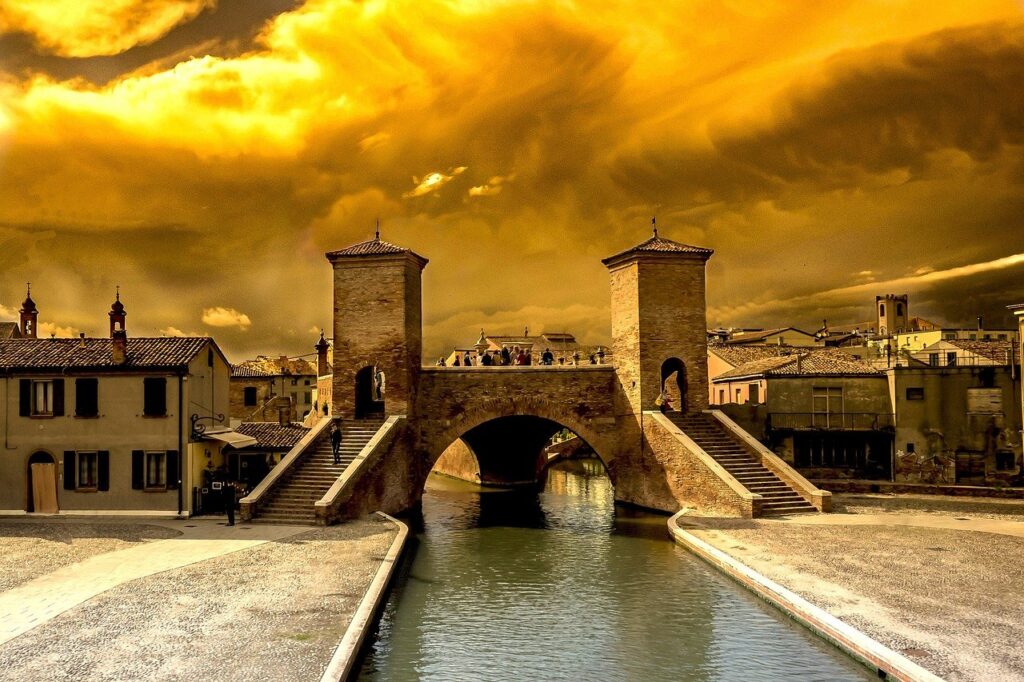
A ‘mini’ Venice, Comacchio is made up by 13 islands, linked by a canal network and bridges. Unlike Venice though, Comacchio is a sleepy town where you won’t find many tourists and yet it’s well worth visiting to discover its charm. It’s also situated in the heart of the Po Delta Regional Park, one of Italy’s Unesco World Heritage sites.
For centuries, the town’s main industry has been fishing. The 17th century Pescheria still exists today and is still home to the fish market. Here you’ll have the opportunity to buy Comacchio’s speciality – eel – which you’ll find on many restaurant menus either roasted or marinated. You’ll even find it used in soups and put in paninis. Every Autumn, the town hosts the eel sagra (festival) but if you can’t make it to Comacchio then, you can learn more about the industry and foodstuff at the Manifattura dei Marinati.
In front of the Pescheria is the Ponte delle Carceri (Bridge of Jails), home to the prisons that were once used to incarcerate smuggling fishermen. It is also next to the larger Trepponti bridge. This 17th century bridge was once the main defence gate at the entrance to the town and is made up of five elegant staircases built at the junction of five canals, and is crowned by two small towers. Also worth a visit is the 8th century Duomo and bell tower and the Ospedale degli Infermi. Whilst this building was once home to the sick and destitute, it now houses the Museo Delta Antico, a prominent collection of over 2,000 finds that date from Protohistory to the Middle Ages.
Compiano
A Medieval walled village, Compiano was, for centuries, a tiny independent principality with links to the royal house of Monaco. Like so many of the hilltop villages in this area, it boasts its own castle where you can now find the Masonic Museum and the Gambarotta Collection of 18th-century furnishings and paintings left to the town by Countess Lina Raimondi Gambarotta, the last owner of the building. The Church of St John the Baptist is also worth a visit.
Dozza
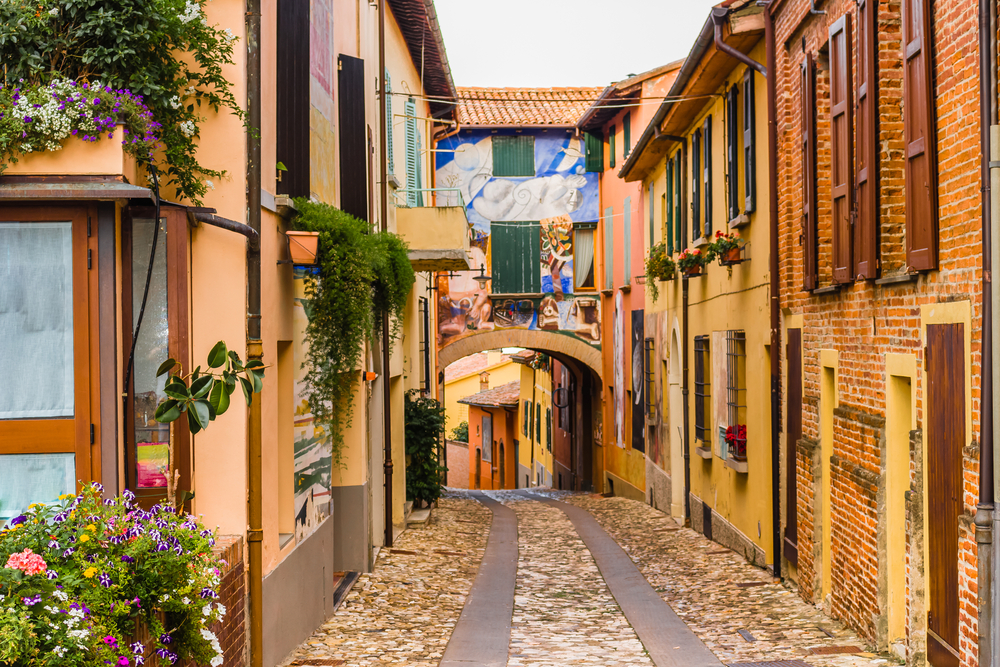
Dozza is another of the borghi piu belli d’Italia. The medieval village of Dozza is dominated by its castle – Rocca Sforzesca – where visitors can enjoy tours to discover more about its history dating from Medieval times through to the Renaissance and up to the 18th century. The fortress is also home to the Enoteca Regionale Emilia Romagna, an enoteca and wine bar dedicated since 1978 to wine-making products of the Emilia-Romagna region. Located in the underground vaulted cellar area of the Sforza’s Fortress, the enoteca has more than 1000 different labels for visitors to purchase.
However, Dozza is perhaps more famous for its simpler houses adorned with numerous paintings turning it into an open air gallery. Every 2 years in September, the 4 day long Biennale of the Painted Wall takes place during which artists from all over the world will come and paint new artworks on the walls.
Faenza
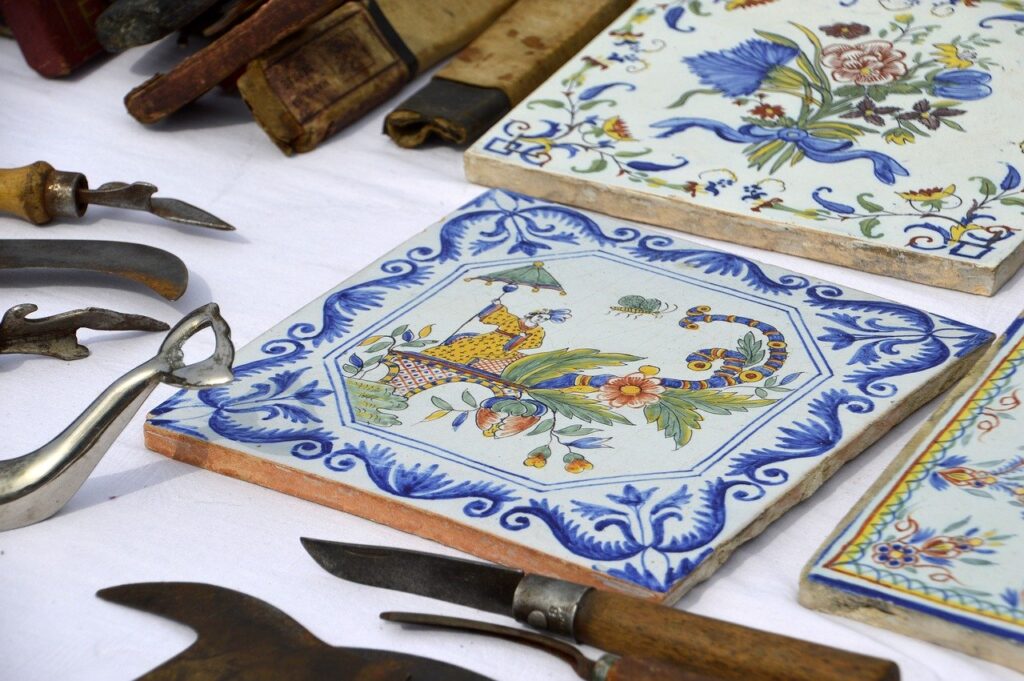
Famous for the manufacture of ceramics called faience – a type of brilliantly coloured varnished earthenware pottery also known as majolica – since the 15th century, it’s therefore perhaps not surprising that Faenza is home to the International Museum of Ceramics where visitors can see examples of ceramics from all corners of the globe and from all historical eras.
But there is plenty more to discover in Faenza too. Of note are the two main piazzas – the Piazza del Popolo and the Piazza della Liberta. The former is lined by two porticoed wings and overlooked by the Palazzo Municipale (once the home of the noble Manfredi family) and the Palazzo del Podesta, whilst the latter is home to the late 15th century cathedral (in which you will discover many important Renaissance artworks) as well as the monumental fountain of the early 17th century.
Also worth exploring is the late 18th and early 19th century Palazzo Milzetti, the elegant Teatro Masini and the two museums in Faenza – the Pinacoteca and the Carlo Zauli Museum.
Time your visit to coincide with one of the many annual events that are held in Faenza including the Mondial Tornianti (Pot Thrower’s World Championship) and, our favourite, the Palio del Niballo held on the 4th Sunday in June. This is one of Italy’s oldest jousting tournaments during which the five districts (rioni) of the city compete, accompanied by historical reenactments, food stalls galore and stunning flag celebrations in the main square.
Ferrara
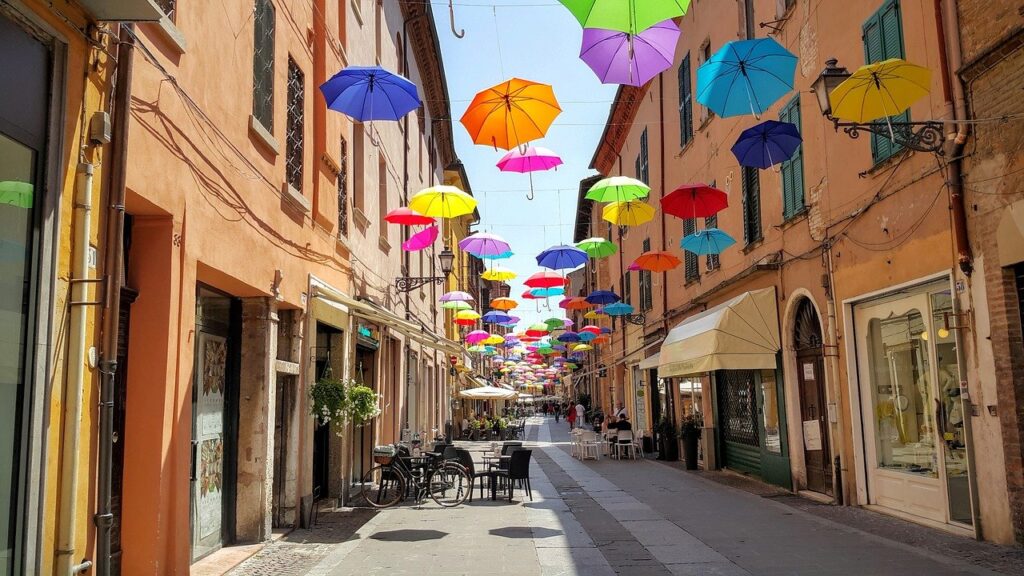
Like so much of Emilia Romagna, Ferrara has a long and interesting history dating back to 753 AD but owes much to its associations with the House of Este who played a major rule in Italian affairs from the 1400s onwards.
Certainly there are a wealth of buildings in Ferrara that owe their existence to the Este family such as the Palazzo dei Diamanti (now an art gallery), as well as a plethora of wonderful public spaces such as the Parco Massari so it’s not surprising that the historical centre of Ferrara has been included in UNESCO’s list of World Heritage sites for over 25 years.
Other spectacular sites include the Medieval 14th century Castle Estense (or Castle of Saint Michael) that sits on an island in the heart of the historic old town, surrounded entirely by a moat in which sit its four guard towers. Inside visitors will discover a series of beautifully decorated rooms including the Chamber of Dawn, the Ducal Chapel and the Dungeons. Or just as impressive is Ferrara’s cathedral which is also home to a fascinating museum and which boasts a beautiful facade that takes its style from both the Romanesque and Renaissance periods. However, in our opinion, its interior is even more beautiful and ornate.
A snapshot of Ferrara’s more recent history is captured in the Museo del Risorgimento e della Resistenza which provides a fascinating account of the Ferrara resistance movement against Mussolini during WWII.
Another way to get a feel for the city is to walk around its perimeter. Like so many cities, Ferrara was once encircled by large stone walls however, even today, much of the ancient walls still stand and it’s possible to walk all around the city on a footpath that stretches nearly 10 kilometres.
Fidenza
These days, Fidenza attracts most of its visitors because of the presence of the nearby outlet mall, home to dozens of designer brands sold at discounted prices and accessed by car or by bus from the central train station in Fidenza itself.
However, it is worth visiting the historic centre of Fidenza too. Make a beeline for the 11th century Romanesque cathedral with its impressive facade, the Magnani Theatre, the Porta San Donnino, and the Church of San Michele. Fidenza is also home to two notable museums – the Museo del Duomo and the Museo dei Fossili (fossil museum) containing fossils from the nearby Stirone River.
Fiumalbo
Featuring on the list of borghi più belli d’Italia along with earning the well deserved accolade of Orange Flag status from the Italian Touring Club in 2001, Fiumalbo is set in the most idyllic of locations surrounded by babbling streams, mature oak and beech forests and set off by the green of the mountains beyond. It sustained damage during the earthquake in 1920 but was since rebuilt.
These days, it’s a calm, peaceful and rather serene spot to explore. It’s easy to lose track of time in the narrow streets and alleyways. As you explore, look out for the Church of San Bartolomeo Apostolo. Sitting opposite is another church – the 16th century Chiesa dei Bianchi – whilst also nearby is the Chiesa dei Rossi, now home to a museum of sacred art. And don’t forget to look up to see if you can find any of the margolfe (small stone sculptures depicting women’s faces) that adorn many of the buildings in the town.
Forli
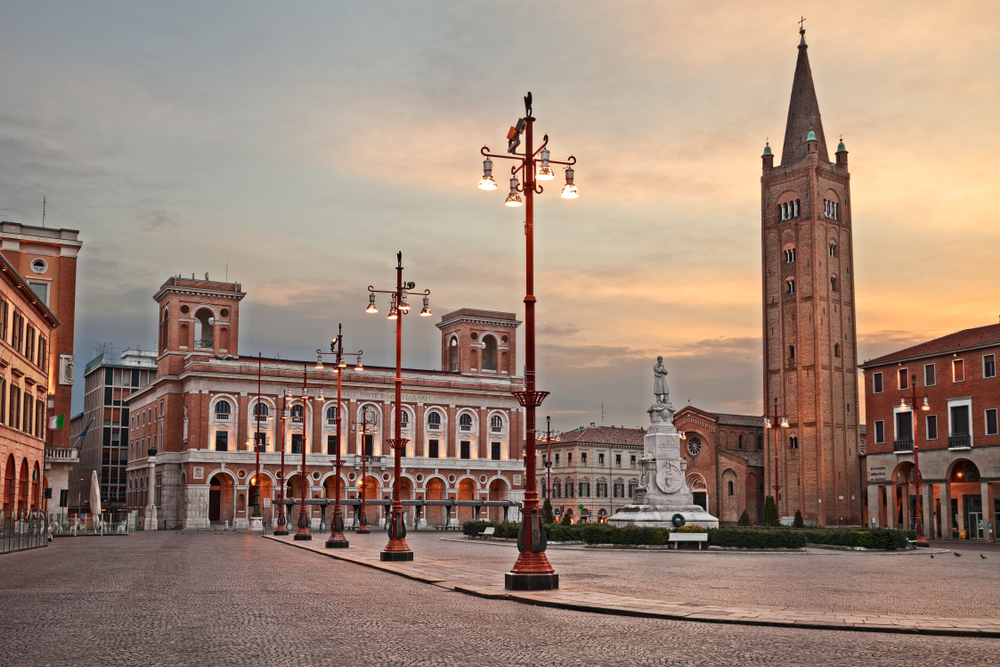
Unfortunately, Forli sustained significant damage during WWII but has subsequently been regenerated and, nowadays, is a thriving commercial centre.
Its skyline is dominated by the tall bell-tower of the Basilica Abbey of San Mercuriale, inside which you will find artworks by both Passignano and Tempesta. The abbey is situated in the Piazza Aurelio Saffi which is where you will also find the town’s historic post office, the Palazzo Comunale, the Chiesa del Suffragio and the Palazzo del Podesta. The latter. isa rather unassuming building but look up and you’ll see a small circular balcony which hides a rather gruesome past… it was made to cover the cages that hung here displaying corpses or convicts awaiting trial.
The other main piazza in the town is the Piazza del Duomo where, not surprisingly, you will find Forli’s cathedral. This is an extremely unusual design, resembling the Pantheon in Rome more than a Christian religious building but it’s well worth a visit.
Gualtieri
Start your visit in the Piazza Bentivoglio, one of the most beautiful squares in Italy, designed by architect Giovan Battista Aleotti, nicknamed ‘Argenta’ and measuring an exact 96 metres on each side. Aleotti was also responsible for the construction of the Palazzo Bentivoglio which sits one one side of the piazza, now home to the Lords’ Chapel, Aeneas’ Hall, Jupiter’s Hall, Icarus’ Hall, the Giant’s Salon and the Carpenters’ Hall where you will find some stunning 17th century frescoes, artworks and a museum. The Church of Santa Maria della Neve is also found on the Piazza Bentivoglio as is the Civic Tower.
The other main square in Gualtieri is the Piazza Cavallotti, which is also worth a visit as is the 16th century Church of the Conception and 18th century theatre. During the Summer months, the theatre hosts an excellent program of shows and performances.
Finally, a visit to Gualtieri is not complete without discovering the English style gardens at Villa Torello-Malaspina-Guarienti.
After all this walking, you’ll need to top up your energy levels so, before you leave Gualtieri, make sure you try the gnocco fritto, a fried dumpling which is eaten with local salami and cheese. It’s absoutel delicious!
Modena
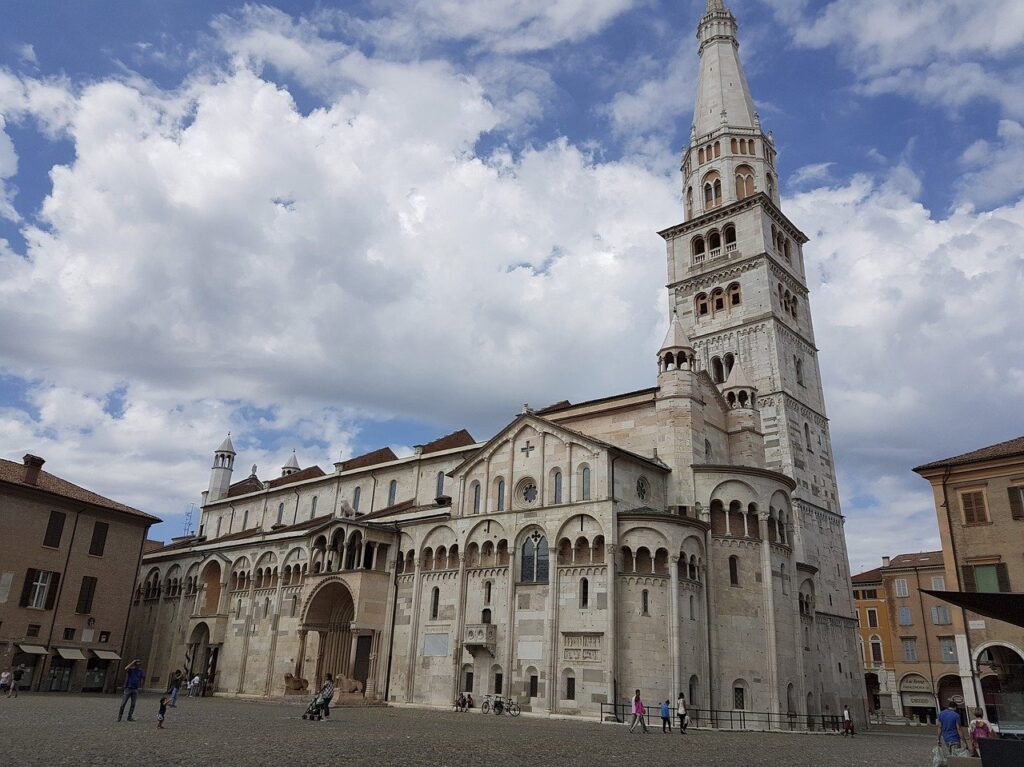
Modena is yet another of the sites in Emilia Romagna that is an Italian UNESCO World Heritage site. Home to the factories of Ferrari, Lamborghini and Maserati, it is famous for its car production, and not surprisingly, there are plenty of car-related attractions for the petrol heads amongst you including the Enzo Ferrari Museum, the Maserati factory and showroom, the Museo Stanguellini, the Lamborghini museum and the Ducati factory and museum.
However, it’s not this that has meant Modena has been awarded UNESCO heritage status. It is Modena’s Cathedral, Torre Civica and Piazza Grande that has meant it has been awarded this accolade. With its soaring tower, the 12th century cathedral is the most perfect example of Romanesque art. Commissioned by the Canossa dynasty and the work of two great artists – Lanfranco and Wiligelmus – it’s also home to the remains of Modena’s patron saint, Saint Geminiano.
And, of course, don’t leave Modena without picking up some of their delicious balsamic vinegar. The Aceto Balsamico Tradizionale di Modena DOP and Aceto Balsamico di Modena IGP both enjoy protected status from the European Union.
Montefiore Conca
A small village, towered over by its recently restored 14th century castle from where you can enjoy incredible views stretching as far as Ravenna and Fano and to the Apennine hills and even San Marino, Montefiore Conca is a charming example of a typical Italian village. Also of note is the 12th century Church of Saint Paul, home to a rather magnificent altarpiece by Luzio Dolci, the 15th century Church of Mercy Hospital and the Sanctuary of Madonna di Bonara.
Montegridolfo
The most beautiful of villages, only 30 residents live inside the walls of Montegridolfo but, whilst there may not be much to see due to its size, we reckon you’ll struggle to tear yourself away from its narrow cobbled streets.
Parma
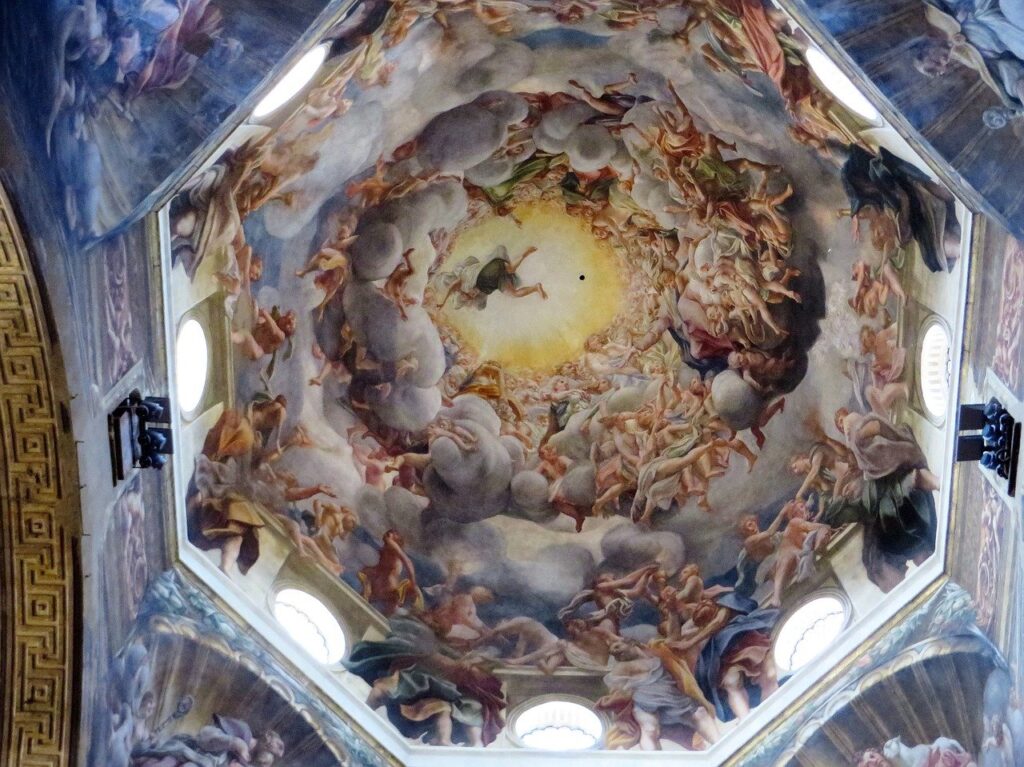
Parma is famous for its architecture, music and art, not forgetting, of course, its cheese and ham. Parma’s history dates back to the Bronze Age, and there is a wealth of things for visitors to see and do. Most noteworthy are the spectacular Romanesque cathedral, with its series of stunning frescos, along with the nearby octagonal shaped Baptistery and the Church of Saint John the Evangelist, filled with religious artwork. Its’s also worth taking the time to explore the Palazzo della Pilotta which is home to the Teatro Farnese (an impressive wooden theatre), the National Gallery and the Biblioteca Palatina. Across from the Palazzo, you’ll discover the Parco Ducale, a spacious park with plenty of immaculate pathways and the perfect place to relax.
But, of course, a trip to Parma wouldn’t be complete without sampling the wonderful delicacies! A number of factories offer Parmigiano Reggiano food tours, and the same exists for parma ham too.
Piacenza
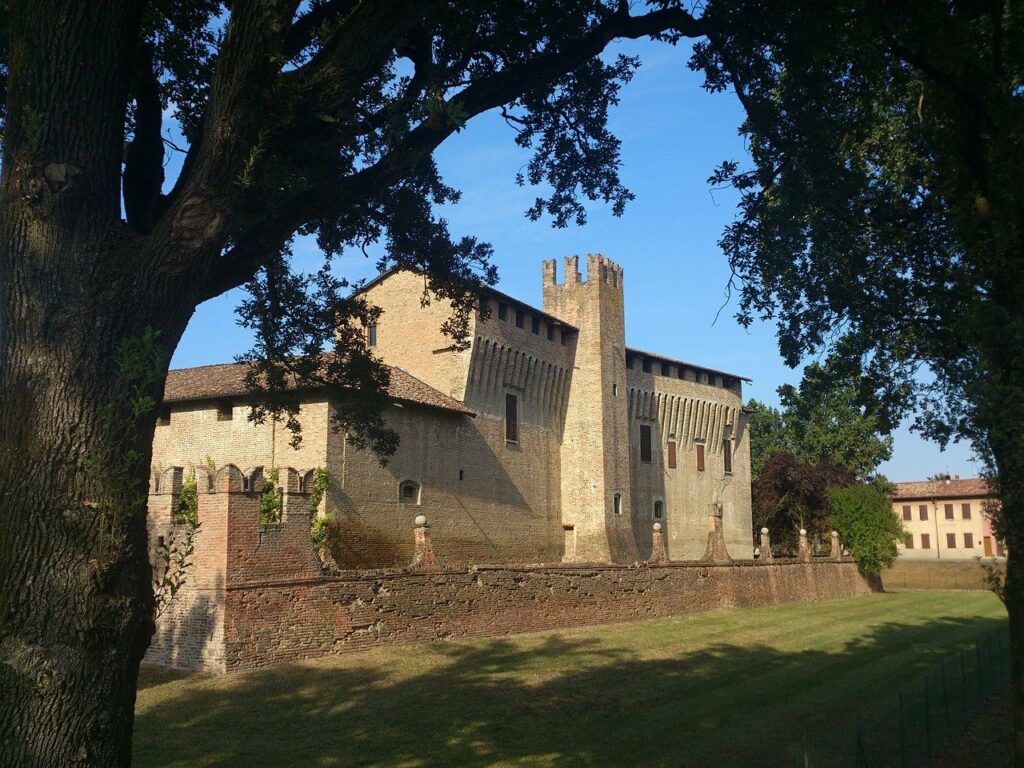
The Romans named this ‘pleasant place’ (Placentia) and certainly, Piacenza is an attractive city, home to some real architectural gems including the Palazzo Farnese and the Palazzo Gotico. The former dates back to the 14th century but was extended by Emperor Charles V in the 16th century. Set over five floors, it boasts. an ornate facade whilst inside it is home to a number of museums including one that contains the ‘Piacenza Liver’, a bronze liver with inscriptions on. The latter is rather iconic and has been designed and built in the Lombard Gothic style with an open portico and white stone arches contrasting with the red brick above.
Also of note is the 12th century Romanesque Cathedral of Piacenza. Its facade is extremely pretty with a large circular rose window whilst, at 32 metres tall, its bell tower looms over the church.
Ravenna
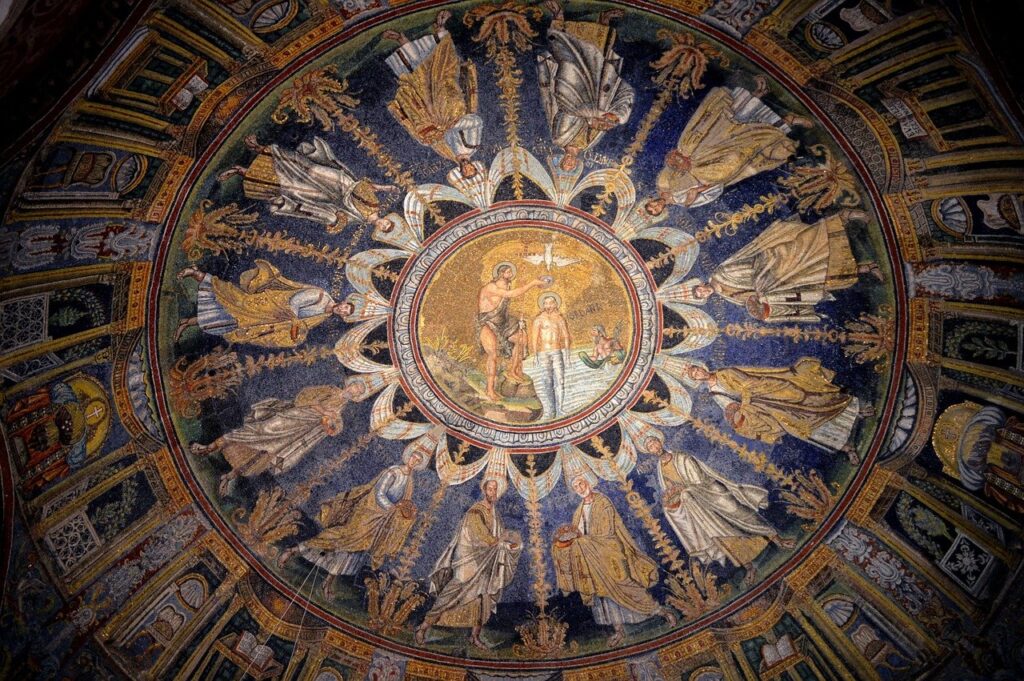
Another of the towns in Emilia Romagna to make it onto the list of Italian UNESCO world heritage sites, Ravenna has earned its place due its incredible collection of early Christian mosaic artwork. Eight monuments are included – the Galla Placidia Mausoleum, the Mausoleum of Theoderic and the Baptistery of Neon, the Arian Baptistery, the Basilica di San Vitale, the Palazzo Arcivescovile and Sant’Apollinare in Classe just outside the city. A visit to Ravenna offers the chance to be transported back to the Byzantine era via these well preserved monuments.
Ravenna is also the resting place of Dante, the author of ‘The Divine Comedy’ who was exiled from his native Florence to Ravenna in 1318. You. can find his elaborate tomb in the graveyard of the San Francesco Basilica in Ravenna.
Try to visit during May and July when the city also hosts the Ravenna Music Festival, a showcase of classical, jazz and world music.
Reggio Emilia
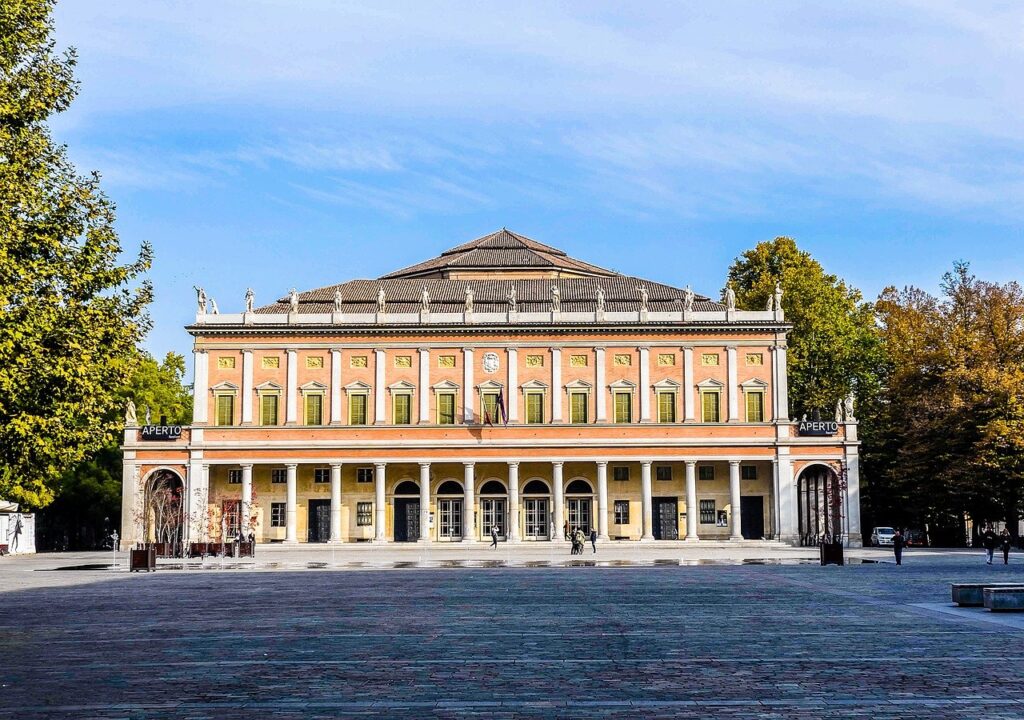
A hexagonal shaped town, Reggio Emilia’s main buildings date from the 16th and 17th centuries. Its claim to fame is that it is the birthplace of the tricolour, as it was here that the Italian flag was raised for the first time in 1797.
Rimini
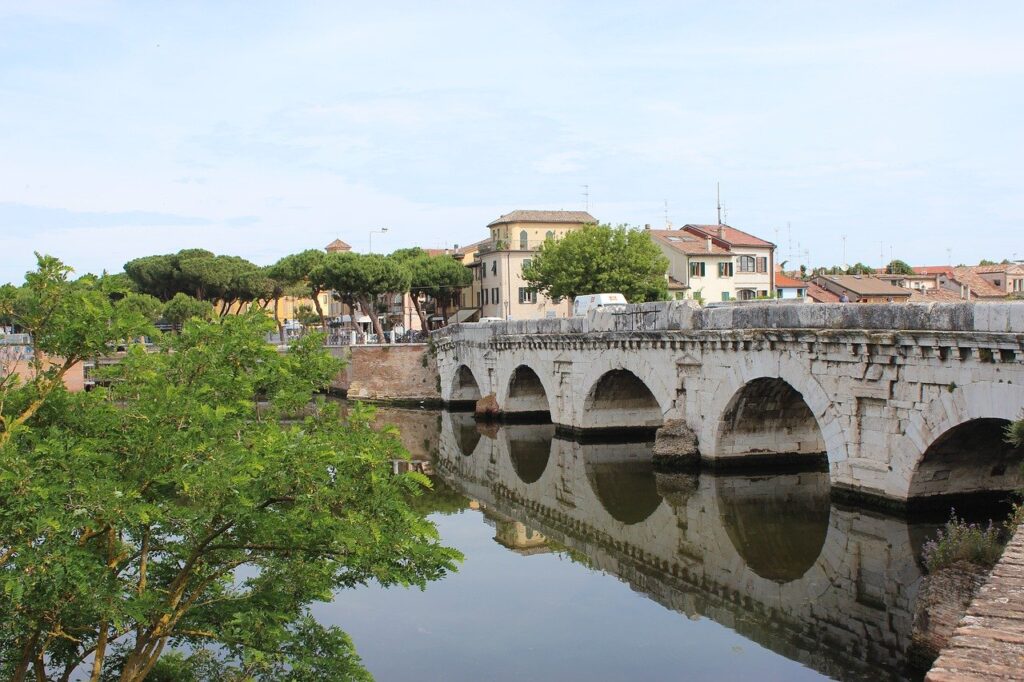
In existence since Roman times, Rimini is now one of Emilia Romagna’s largest cities and a popular seaside resort boasting no less than 15 kilometres of beautiful white sandy beaches.
It’s still possible to see glimpses of Rimini’s Roman past. The Arch of Augustus dating back to 27 BC still stands (although the original statue of the Emperor Caesar Augustus that once stood atop it has long since been replaced) as does the Ponte di Tiberio. This 5 arched bridge straddles the canal and still stands in perfect condition despite being built over 2000 years ago by the Romans in 20 BC.
More recent archeological sites include the Malatesta Temple, an unfinished cathedral that took nearly 500 years to build and is still not actually finished and the Piazza Tre Martiri where you’ll find find the Tempietto di Sant Antonio and the Chiesa Dei Paolotti. Another of Rimini’s main squares is the Piazza Cavour, home to the town hall and the Teatro Galli.
Museums and attractions include the Museo della Citta where you can learn about the region’s archaeology and ancient history and Italia in Miniatura a short distance outside the city centre. Or take a ride on the big ferris wheel at Rimini’s seafront.
San Giovanni in Marignano
The gateway to the Valconca Valley, this is a charming village which earned itself the nickname of the ‘Granary of the Malatesta’ due to the abundance and quality of its agricultural output under their rule. When you’re walking through its streets, look under your feet to see the circular stone inserts among the cobblestones which are the openings to over 200 underground grain stores.
Also look out for the Church of St Peter and the Church of St Lucia where you will discover a rare 18th century organ as well as the later 19th century Augusto Massari theatre. And make sure you seek out the remains of the ancient defensive walls believed to have been designed by Filippo Brunelleschi.
Why not visit in June during the Witching Night (held between the solstice on the 21st and the feast of the patron saint on the 24th) to join in the annual village celebrations.
San Leo
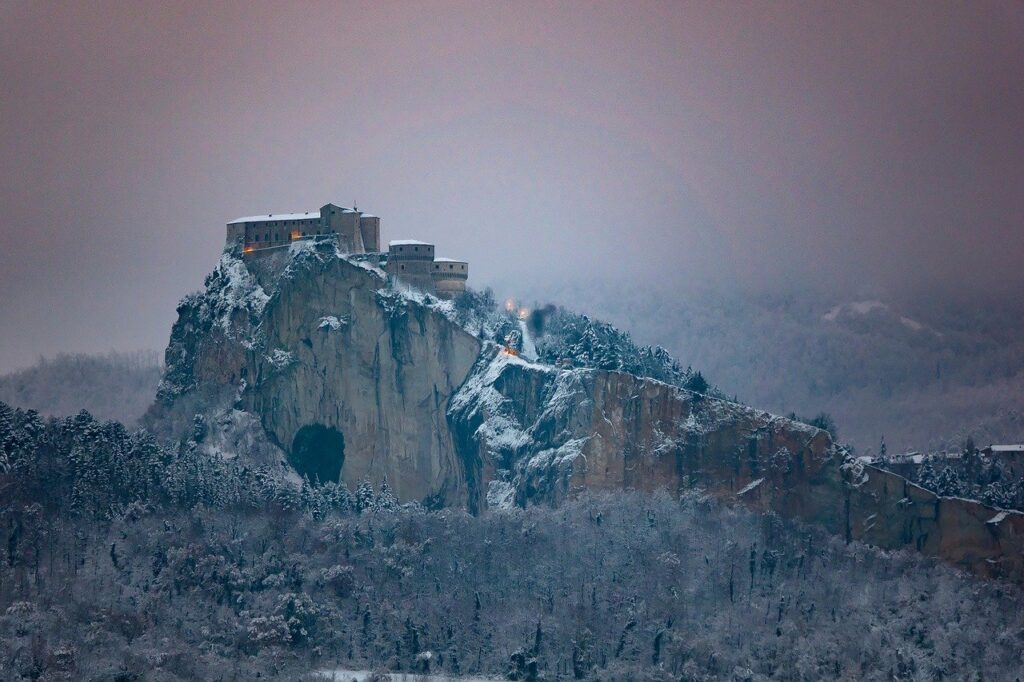
Awarded both the Bandiera Arancione (orange flag) by the Italian touring club and featuring on the list of borghi piu belli d’Italia, the heart of the village of San Leo sits just below the impressive castle which sits on top of the rocky cliffs above. The castle inspired Dante who drew on it for his descriptions of purgatory.
Start your visit in the heart of the village where there are a wealth of sites to explore. These include the church in Piazza Dante (which dates back to the 7th century and which once housed the remains of Saint Leo until Henry II ordered them to be taken to Germany where they were subsequently mislaid) and the larger 12th and 13th century Duomo and nearby watchtower of the same age. Interestingly, whilst outside the tower is box-shaped, inside it is circular. Also of note is the Palazzo Medici, home to the Museum of Sacred Art, and the beautiful 17th century Della Rovere Palace built by Francesco Maria II della Rovere.
Then make the short but steep climb from the village to the castle. Over the years, the castle has been home to many prominent figures including Dante and St Francis who it is believed founded the nearby Convent of Saint Igne.
Verucchio
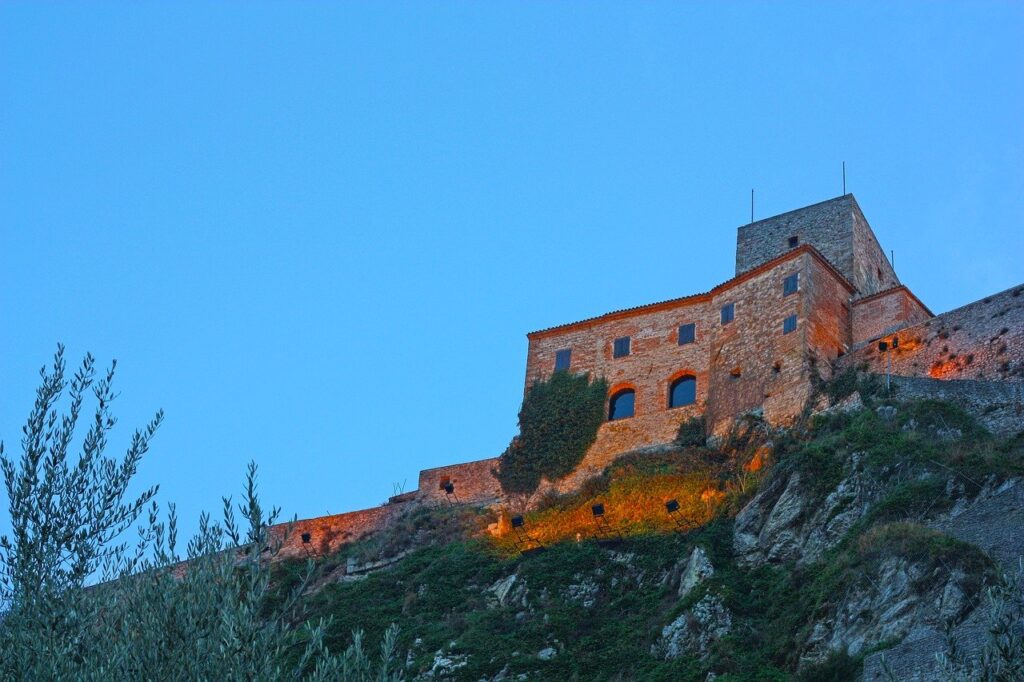
Sat atop a rocky hillside, and nestled in the lower Valmarecchia, Verucchio is a picturesque ancient village which has again been awarded the Bandiera Arancione by the Italian touring club and which has also made it on to the list of borghi piu belli d’Italia. It is dominated by the Malatesta Fortress once lived in by Mastin Vecchio, considered to be one of the founders of the powerful Malatesta family and who was mentioned by Dante in his ‘Divine Comedy’ earning Verucchio the nickname of the ‘Cradle of the Malatesta’. On the other hill of the village sits a monastery where the Passerello Fortress used to stand whilst lower down is a Franciscan monastery believed to have been founded by St Francis. The story goes that a 25 metre cypress in the monastery cloisters was grown from a staff planted by the saint himself.
Find out more about the history of Verucchio in the Municipal Archaeological Museum.
Vigoleno
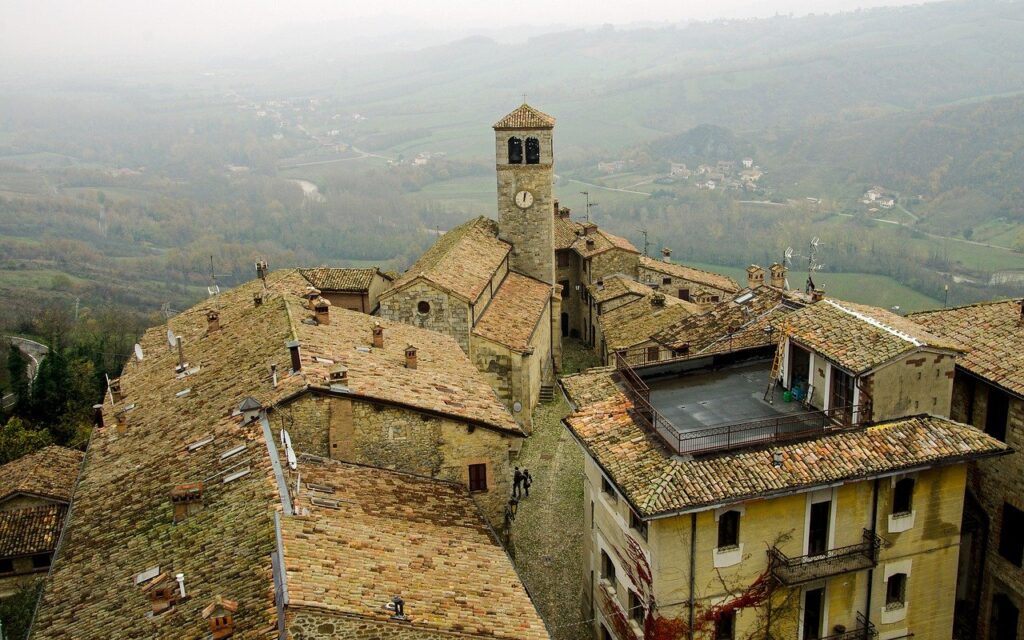
One of the best preserved villages in Emilia Romagna, Vigoleno is another of the villages that have secured a place on the list of borghi piu belli d’Italia. Access to the village is via a door which opens up into the central piazza, home to the castle and 17th century Oratory of the Madonna delle Grazie.
Vigoleno’s first castle was almost completely destroyed in the 14th century but, thanks to the Scotti family was rebuilt. The Scotti’s went on to live in the castle until the early 20th century when they were forced to sell for financial reasons. This long period of stability is one of the key reasons why the village has been so well preserved though. In the 1920s the castle became the property of Princess Mary Ruspoli-Gramont and welcomed an illustrious line-up of visitors including the pianist Arthur Rubinstein and painters Max Ernst and Alexandre Jacovleff. These days, it is used as a hotel but holidaymakers can still visit part of the property and its sweet little 12 seater theatre.
When visiting Vigoleno, make sure you also try the Vin San of Vigoleno, a passito wine that is only made in small quantities and stored in wooden barrels for a minimum of five years before it is ready to drink.
Vignola
No visit to Vignola would be complete without a visit to its Medieval castle. The exact origins of the castle are unknown but it certainly dates back as far as the 12th century. Over the years, it has had a number of uses including being a residence for the Contrari family in the Renaissance period before passing into the hands of the Boncompagni Ludovisi Family. These days, visitors can explore inside which is sumptuously decorated and home to a chapel and hall (Sala del Padiglione) which contain some stunning early 15th century frecoes. The town is also home to a museum and some other noteworthy buildings such as the Palazzo dei Contrari and the Palazzo Boncompagni. However, the city is mostly known as the birthplace of the Renaissance architect Jacopo Barozzi da Vignola.
However, no visit to Vignola would also be complete without sampling its cherries. This is an area renowned for its fruit cultivation and production.
We hope this A to Z guide to Emilia Romagna has given you a snapshot for what the region has to offer. If you have enjoyed reading it, then check out our other A to Z guides including our Tuscany guide, Umbria guide, Marche guide, Lake Maggiore guide and Puglia guide and keep your eyes peeled for our guides to Sicily and the Amalfi Coast which will be out soon!
